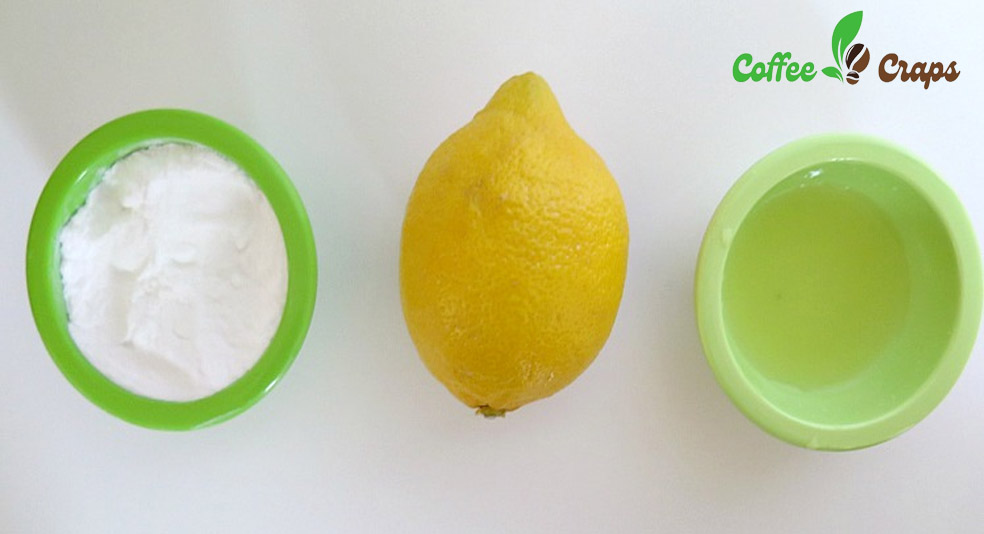Coffee makers are one of the devices we use the most at home, and over time they can begin to accumulate calcium and dirt in their mechanism, causing the coffee to acquire a bad taste or in some cases preventing water from coming out to prepare drinks. . At Avera we know that you want to give the best use to your appliances, and giving them a good cleaning from time to time is one of the ways to do it; That is why we show you different effective methods to descale your coffee maker.
Depending on the type of coffee maker you have, descaling may be different; While in some cases it will only be enough to wash it regularly with soap and water, other coffee machines, such as capsule ones, require a special cleaning method. Learn how to descale a coffee maker? in the simplest way.
what is descaler for coffee machines?
Descalers are special cleaners for coffee machines that get rid of mineral deposits and limescale buildup inside the machines. Minerals in the water can cause these layers to build up over time, which can change the taste of the coffee and the way the machine works. Descalers get rid of these layers by breaking them down and dissolving them. This keeps your coffee machine running smoothly and making delicious coffee. Regularly descaling your machine helps keep the quality of your coffee high, extends its life, and makes sure it keeps running smoothly. Following the maker’s advice for descale is important to keep your coffee machine in great shape and get the perfect cup every time.
How to descale a capsule coffee maker
There are different kinds of coffee machines, but the hardest to clean are capsule machines like Nespresso, Dolce Gusto, and our Avera multi-capsule coffee machine. This is because they have a complicated system inside that is hard to get to. Most of these kinds of coffee machines have a cleaning routine that gets rid of coffee residue in the pipes, but this doesn’t stop calcification.
Clean coffee makers with vinegar
One of the best home remedies for getting rid of calcium in coffee makers is vinegar. The process of cleaning is pretty easy; just follow these steps:
Step 1: Put a mix of half cold water and half white wine vinegar or spirit vinegar into the coffee maker’s water tank.
Step 2: As if you were making coffee, press the coffee maker’s power button. Stop the process and wait at least 30 minutes when the tank is half full of water. After a while, turn the coffee maker back on so that the whole thing can use up the rest of the water.
Step 3: Fill the tank again with pure cold water, ideally filtered, and set the coffee maker on again to remove any vinegar flavor from the pipes. Repeat twice to avoid a weird taste in your next cup of coffee.
Step 4: Finally, use soap and water to clean the tank and a wet cloth to clean the outside of the coffee maker.
Descale your coffee maker with lemon

Lemon juice is great for cleaning the inside of coffee makers because it gets rid of dirt and germs. Using lemon is better because it won’t leave behind any bad smells or tastes in the ducts after cleaning the machine.
Step 1: Mix 2 parts lemon juice with 1 part water, and then pour it into the coffee maker’s kettle. Either lemon extract or freshly squeezed lemon juice will work.
Step 2: Turn on the coffee machine and let the whole tank’s worth of coffee go through the machine.
Step 3: When the water and lemon juice mixture is done, wait about 20 minutes and fill the tank back up with clean water to get rid of any acid that is still in it. Like with vinegar, you can do this twice to make sure the coffee maker is clean all the way through.
Step 4: Clean the coffee maker’s outside and the tank.
How to descale a coffee maker with baking soda
There’s no doubt that you have baking soda at home. It works great to remove scale from coffee makers. With this tool, you can clean the machine’s insides and get rid of any stains on the outside. It’s very easy to use:
Step 1: put two tablespoons of baking soda into the water tank and fill it up with clean water all the way to the top. Before you start the machine, make sure the baking soda is completely mixed in.
Step 2: Do the same thing you did with the vinegar. Start the machine, stop it in the middle, and wait 30 minutes. Then filter the rest of the water. Then add clean water to the tank again to get rid of any leftover lime and baking soda.
Step 3: Use a damp cloth and a little baking soda to clean the outside of your coffee maker to finish the job.
How to clean a drip coffee maker
While boiling water over and over, drip coffee makers also tend to get limescale inside. This coffee maker’s mechanism is easy to use, though, so you may notice that it hardens after a few uses. put to use for months.
If you want to clean your drip coffee maker better, we suggest using baking soda instead of the other homemade ways we talked about above for cleaning capsule coffee makers. Baking soda can also be used to clean the pipes of limescale, bacteria, and dirt. It can also be used to clean the bottom plate, where the jug goes, of rust and coffee stains.
There is a great way to make the carafe on your drip coffee maker look like new again if it is stained or scaled. Add some vinegar, baking soda, and raw rice to the jug. Then fill it halfway with hot water (you can use our electric kettle for this). After a strong stir, let it sit for about 10 minutes. This will get rid of all the dirt. Wash the jug with soap and water.
How do coffee machine cleaning tablets work?
Cleaning tablets that remove scale are a good choice if you’d rather buy a skilled cleaner than make your own. Several brands make cleaners that come in pill or liquid form and can be used to clean capsules, drip, and even espresso machines. They are cheap and simple to use.
There are no changes needed for this cleaning method. Just put the item and water in the full tank and run the water through it like you would for coffee. The directions for each brand will tell you how much product to add. Then, just like when you clean something at home, you should run clean water through the coffee maker to get rid of the leftovers.
Cleaning Italian coffee makers

Over time, Italian coffee makers also get hard, but they are very easy to clean and work just as well as the day they were bought. Limescale will show up as a thin white layer all over the bottom tank and the filter that can be taken out of this type of coffee maker. Following these steps will help you get rid of dirt best with vinegar:
Step 1: Put two parts water and one part vinegar into the tank.
Step 2: Assemble the coffee maker and place it on the heat the same way you would to make coffee.
Step 3: Wait for the coffee maker to cool and clean it with plenty of water and a brush (a bottle brush would be excellent).
Step 4: Do the steps again, but this time use only clean water to make sure the coffee maker is completely clean.
How to prevent calcification of your coffee machine
Avoid calcification to avoid clogging your coffee machine and having to clean it more thoroughly, call a professional, or buy a new one. Here are some ways to prolong the life of this equipment and enjoy delicious coffee every morning:
Descale your coffee machine every two months using one of our methods.
Use filtered water for coffee. Tap water contains many pollutants, bacteria, chlorine, and heavy metals. When you boil water, these impurities form a limescale that adheres to your coffee maker. A water filter improves coffee taste and prevents limescale.
Clean the parts of your coffee maker you can access or remove after each use. Thus, lime buildup, grime, and coffee breaks will be avoided. Cleaning the machine’s exterior is also important.
Since you know how to clean and descale your coffee maker, it will last longer.
FAQ
1: What is descaling?
Descaling is the process of removing mineral deposits and limescale buildup from inside your coffee maker, ensuring optimal performance and taste.
2: Why is descaling important?
Descaling is important because mineral deposits can affect the flavor of your coffee and hinder the efficiency of your machine. Regular descaling maintains the quality of your coffee and prolongs the lifespan of your coffee maker.
3: How often should I descale my coffee maker?
The frequency of descaling depends on how often you use your coffee maker and the hardness of your water. As a general guideline, it’s recommended to descale every 1-3 months to keep your machine in top condition.
4: Can I use vinegar to descale my coffee maker?
Yes, vinegar is a commonly used and effective descaling agent. Simply mix equal parts water and white vinegar, pour the solution into the water reservoir, and run a brewing cycle. Rinse with plain water afterwards to remove any vinegar residue.
Final Thought: How to descale a coffee maker?
To clean a coffee maker, mix white vinegar and water in equal parts and pour the mixture into the water tank. Brew coffee without the grounds by running a loop. It should then be rinsed two times with plain water. Check the instructions to see if your machine needs a different way to remove scale. Regularly descaling your coffee maker keeps it clean, makes it last longer, and makes sure that every cup of coffee tastes great.
Read More: How much caffeine is in a cup of coffee?














Leave a Reply